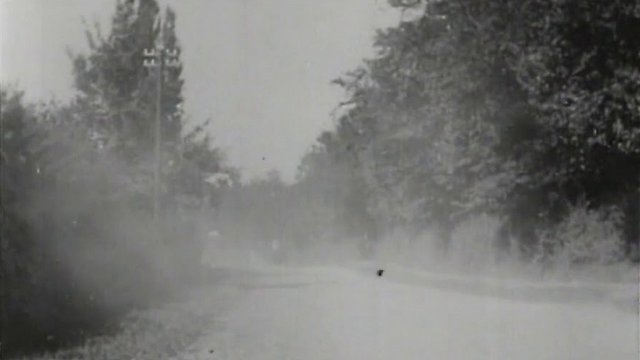
How It Feels to Be Run Over
Where to Watch How It Feels to Be Run Over

Released in 1900, during the earliest days of cinema, "How It Feels to Be Run Over" marks a unique contribution from British filmmaker Cecil M. Hepworth featuring actress May Clark. This early experimental short film is the cinemagoer's voyage into the provocative world of silent movies, especially at a time when filmmaking was still in its infancy.
This film, standing out noticeably for its unusual concept, is an unforgettable exploration of the relationship between the movie camera, the viewer, and the world of the screen. In this sense, the movie reaches out to connect directly with audience members, rather than simply offering a passive scene for them to observe.
The premise centers on a carriage being driven by an alluring woman, enacted by May Clark, followed by a rapid and unforeseen accident. The originality of the film lies not in the dramatic incident itself but rather in the innovative way it has been depicted on screen. This is a world before the advent of special effects, where sheer creativity and intuition lead the screen. Hepworth takes what could be a rather simplistic plot and pushes it into uncharted territory, making the film a landmark in its time.
Contrasting narrative strategies, Hepworth's work offers spectators a firsthand experience of an accident, forcing them to confront their vulnerability and mortality. "How It Feels to Be Run Over" embraces the restrained art of silent filmmaking and enhances it with an explicit focus on audience party. The movie encourages viewers to question their role within the moving pictures, prompting a fascinating dialogue about film as an experiential medium.
Every frame in "How It Feels to Be Run Over" is meticulously crafted to deliver maximum impact. Unlike many movies from this period, the film is more than just a series of static, picture-like frames. Instead, Hepworth manages to create a whirlwind of movement and action that never lets up. It draws out a palpable fear, making the audience members full participants in the enacted event. This dynamic approach results in cinema that is gripping, nerve-racking, and intimately human.
May Clark's performance shines brightly in the short duration of the film. Despite the absence of sound and dialogue, Clark uses her expressive features to evoke emotions that resonate with the audience. Hepworth's choice to give a woman a central role at a time when many were relegated to the background in film showcases his forward-thinking approach to filmmaking.
On the technical side, the cinematography is noteworthy in its own right. Given the item that the film was made, Hepworth shows a surprising level of technical proficiency. The production, despite its primitive nature by today's standards, offers an incredible visual experience. The moving shots, intertitles, and rapid editing contribute to creating an exhilarating atmosphere, capturing the frantic pace of life at the turn of the 20th century.
In conclusion, "How It Feels to Be Run Over" is more than just an old silent film. It's a bold exploration of the human experience and a showcase of early filmmaking's raw yet intriguing charm. As a piece of early cinema history, it offers valuable insight into the possibilities filmmakers were beginning to explore and the new ways they were starting to engage audiences. As a film, it is a breathtaking, nerve-rattling experience that challenges viewers' sensibility and forces them to acknowledge their own vulnerability, all within the space of a few minutes.
Whether you are a media student looking into film's early development, a movie buff seeking to explore silent cinema, or an ordinary viewer interested in vintage films, "How It Feels to Be Run Over" demands attention. Even today, this early 20th-century film carries a strong message about the fragility of life and the unsettling reality of accidents held universally relevant. It is an interesting watch that shows the potential of cinema to move, shock, and stimulate its audiences, even in its most rudimentary forms.
How It Feels to Be Run Over is a Horror movie released in 1900. It has a runtime of 1 min. Critics and viewers have rated it moderate reviews, with an IMDb score of 6.1..
